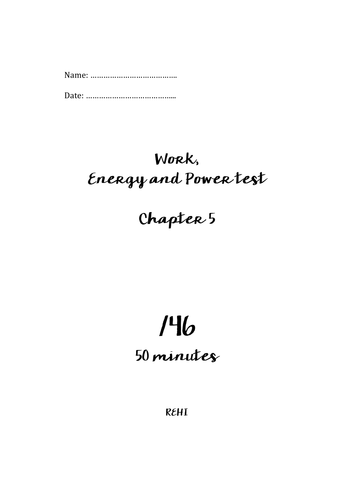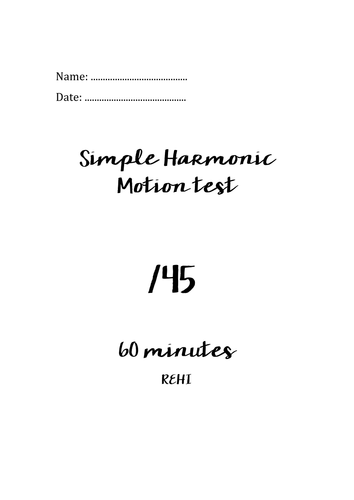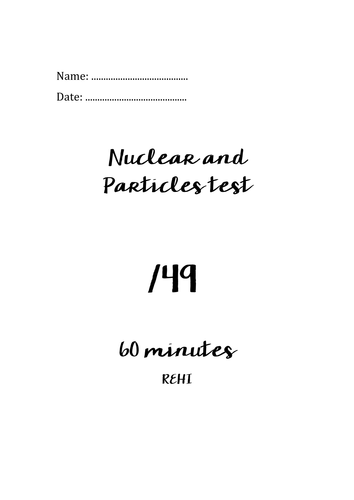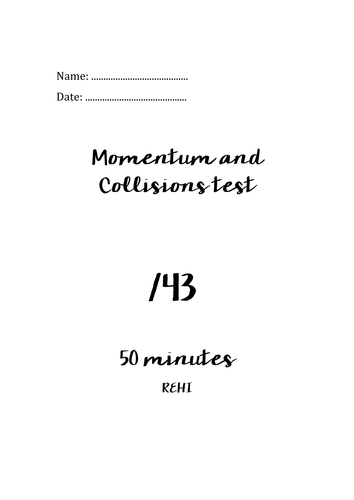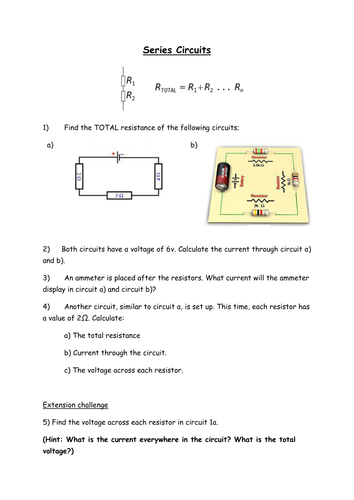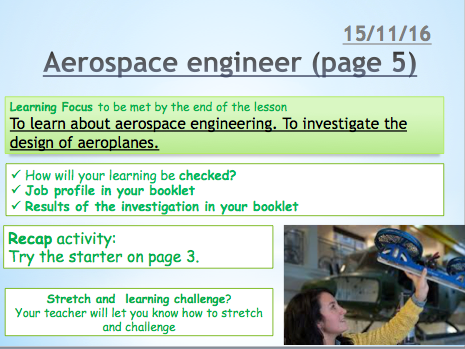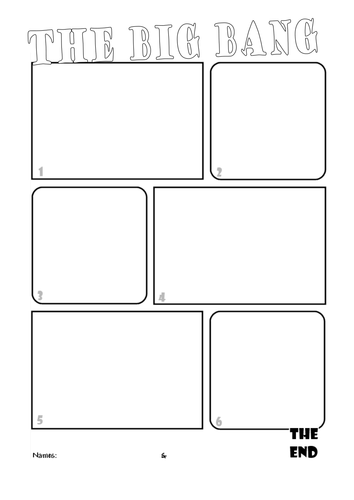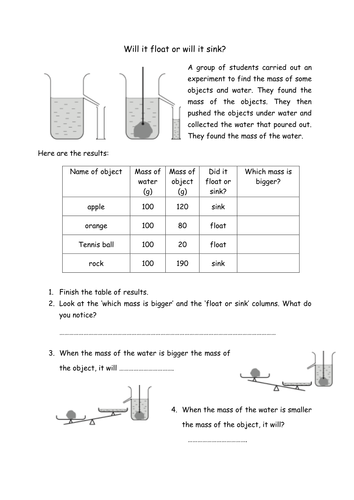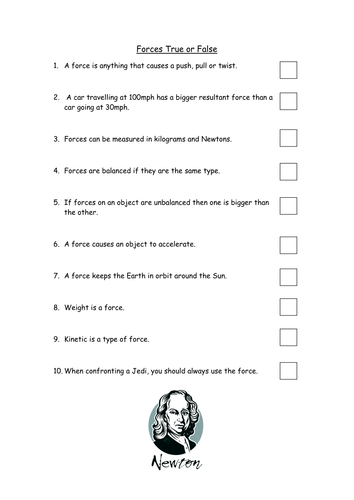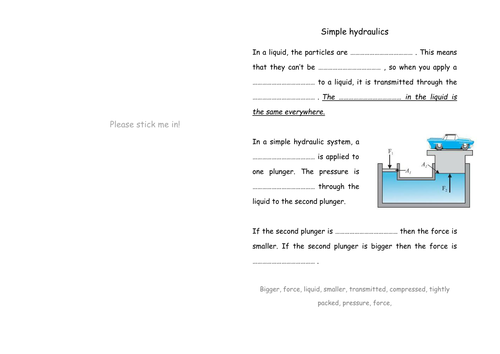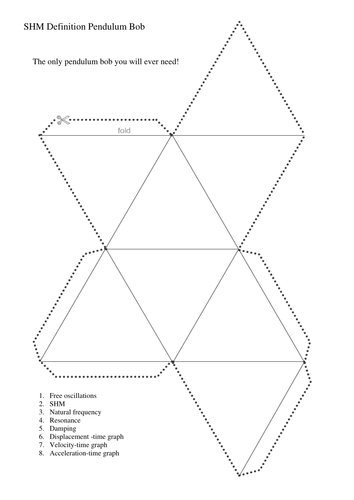
87Uploads
59k+Views
11k+Downloads
Physics
Bundle

OCR KS5 A level Physics test bundle
Four 60 minute tests for KS5 Physics made up on OCR past paper questions.
These are on Momentum and collisions, Nuclear and Particle Physics, Simple Harmonic motion and Work, Energy and Power.

Work, Energy and Power test, OCR KS5 A level Physics
This is a 60 minute assessment made up of past paper questions from the OCR Physics A - H158, H558 course.

Simple Harmonic Motion test OCR A level Physics KS5
This is a 60 minute assessment made up of past paper questions from the OCR Physics A - H158, H558 course.
A level Physics topic questions.

Nuclear and Particle Physics test OCR KS5 A level
This is a 60 minute assessment made up of past paper questions from the OCR Physics A - H158, H558 course.

Momentum and collisions OCR KS5 A level Physics
This is a 60 minute assessment made up of past paper questions from the OCR Physics A - H158, H558 course.
A level Physics topic Momentum and collisions.

Resistors in series
A worksheet to develop students knowledge of resistance in series. Includes equation at the top, and questions which get progressively more difficult.

Practical Science Careers project
A series of 8 practical activities, put into the context of careers in Science. This is aimed at KS3 students, introducing some practical skills.
Aims of the project: To learn about some careers in Science, and to try some out. To develop investigation skills as required in the KS4 core practical’s included at GCSE.
Students get to experience being an Aerospace engineer by designing and testing paper planes, a Biochemist by testing urine samples, a Biomedical scientist by testing different anti bacterial soaps, a Chemical engineer by investigating recipes for bouncy balls, a Civil engineer by designing and testing bridges, a Forensic scientist by taking and analysing finger prints, a Mechanical engineer by making cotton reel motors, and a Pyrotechnic technician, by testing firework colours and making sparklers.
Each includes a job profile page to be filled out using the national careers service website to provide context for the lesson.
Also included is a handy technician guide.
This is designed to be handed out as a student booklet, with each career taking around 2 single hour lessons to complete, aimed at KS3 students. Students develop their investigation skills, as well as learning about some different careers in Science.

Big Bang comic strip
Students order some statements describing the Big Bang Theory, then draw pictures to turn it into a comic strip.

Floating or sinking, Archimedes' principle, density worksheet
A differentiated worksheet on why objects float or sink. The worksheet gets progressively harder, helping students to understand floating and sinking, and finally introducing the idea of calculating density.
Works for KS3, or as a reminder for KS4

Forces true or false
A quick starter worksheet on Forces, aimed at getting students to think about forces and motion.
Could be used as a starter for the topic, or as a recap at the end.

Hydraulics and pressure in fluids
A differentiated worksheet, designed to help students to understand pressure in fluids and how simple hydraulic systems work.
Starts with a gap fill, ends with pressure calculations.

Simple Harmonic Motion SHM definitions pendulum bob
Student cut out and create a pendulum bob on cardboard, then fill in the definitions to help them remember everything they need to know about pendulums!

Resonance and damping worksheet
Differentiated worksheet on damping and resonance in pendulums.
Questions are presented in a grid, with difficulty in columns and topics in rows.
Students have to choose one question from each column, but can choose their own level of difficulty.

Particle guess who
Classic Guess who game but with subatomic particles.
Students can practise using key terms like baryon, meson, hadron, lepton, anti-matter, charge, quark etc

Atoms true or false
This is a true/false activity to introduce atoms. It includes 10 questions to get your students thinking about the size of atoms, and their structure.
I’ve used this in KS3 to introduce the atom, and right through to year 11 as a recap of previous knowledge.


